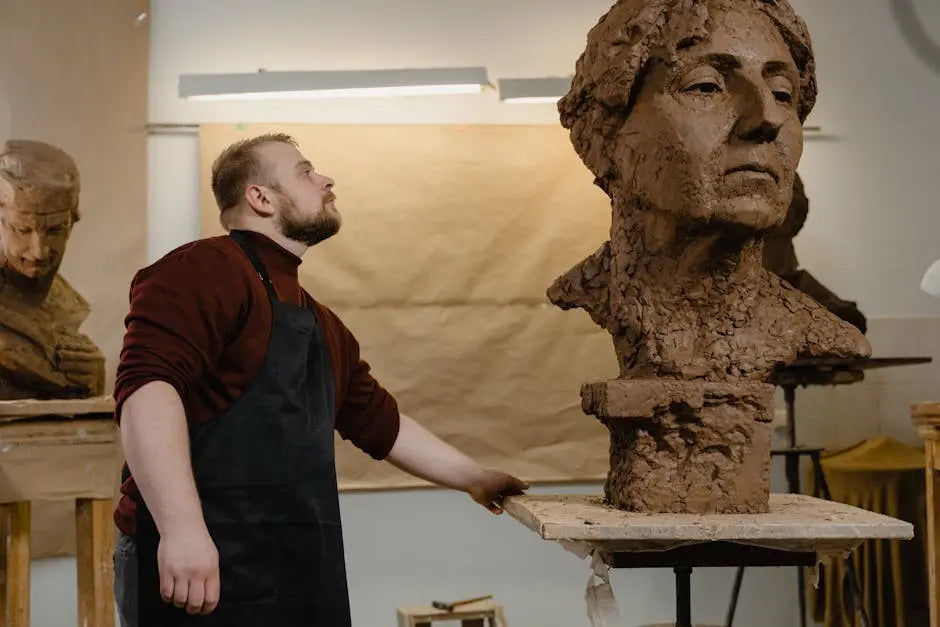My Cart
Your Cart is Currently Empty
FREE SHIPPING ON ALL ORDERS ABOVE $500


Abstract sculptures are a fascinating form of art that capture the imagination through their unique shapes and expressive forms. In this blog, we’ll explore how these intriguing works of art come to life, step by step.
Abstract art focuses on representing ideas and emotions rather than depicting real-world objects. It emphasizes color, form, and texture to convey the artist’s vision.
One might wonder why abstract art is so compelling. The answer lies in its ability to provoke thought and evoke feelings without being restrained by the literal representation of objects. By allowing viewers to interpret the art in their own way, abstract sculptures create a space for personal reflection and emotional exploration.
Abstract art has evolved significantly throughout history, influenced by various artistic movements and cultural shifts. This evolution reflects the changing perceptions and experimental nature of artists striving to break away from traditional forms.
The choice of materials is crucial in abstract sculpture. Artists often use metal, wood, stone, or mixed media to bring their concepts to life, each offering distinct characteristics and challenges.
Selecting the right material for a sculpture is akin to choosing the right medium for a painting. Different materials can drastically alter the feel and look of a piece. For instance, the use of metal can imbue a sculpture with a sense of strength and permanence, while wood might convey warmth and organic fluidity.
In many cases, the material itself can inspire the artist. The textures, colors, or even imperfections inherent in certain materials can spark creativity and guide the artist towards new ideas and executions.
Artists begin by sketching or outlining their ideas, considering the interplay of shapes and how they will occupy space. This planning stage is vital to ensure the sculpture aligns with the intended message.
The design phase is where creativity truly starts to flourish. Artists often create numerous sketches or small models to explore different concepts. These initial versions allow them to experiment with form and space in a more manageable scale before diving into the full-scale sculpture.
Building a sturdy base is essential for supporting the sculpture. Artists work to ensure their creation is both stable and aesthetically pleasing, often involving intricate techniques or tools.
In this stage, precision and accuracy become paramount. Artists must have a clear understanding of how each part of the sculpture will interconnect and support one another. This structural integrity is crucial, especially for larger pieces that need to withstand various environmental conditions.
Beyond functionality, the base is an important element of the overall aesthetic. It serves not just as support but as an integral part of the design, influencing the visual narrative of the piece.
Textural elements bring depth and interest to abstract sculptures. Sculptors use various tools and techniques to manipulate surfaces, creating rich, engaging finishes.
Texture can transform the perceived value of a sculpture. By introducing rough, smooth, or patterned surfaces, artists can intrigue viewers and encourage them to engage more intimately with the piece. It’s often these textures that lead people to touch and physically interact with the artwork.
Emphasizing texture not only enhances the visual experience but also adds an auditory dimension to art. The way light and shadow play on different textures can create an almost musical symphony of interaction with the space around it.
Once the main structure and details are complete, artists refine their work to ensure it meets their vision. Preservation techniques may include sealing or treating the sculpture to protect it from environmental elements.
This phase involves a meticulous examination of the sculpture. Artists focus on smoothing out imperfections, perfecting lines, and ensuring that every aspect aligns with their original concept.
Preservation is not merely about protection; it also ensures that the piece continues to communicate the artist’s vision over time. Proper sealing and treatment might involve applying protective coatings that safeguard the sculpture against the wear and tear of elements like sun, rain, or pollution.
If you’re intrigued by creating your own abstract sculptures or wish to know more about supporting artists, visit our homepage to learn about our art services and offerings.
Creating abstract sculptures is a blend of creativity, technical skill, and emotional expression. Whether you’re an aspiring sculptor or an admirer of the art form, understanding the process behind these stunning creations can deepen your appreciation for them.